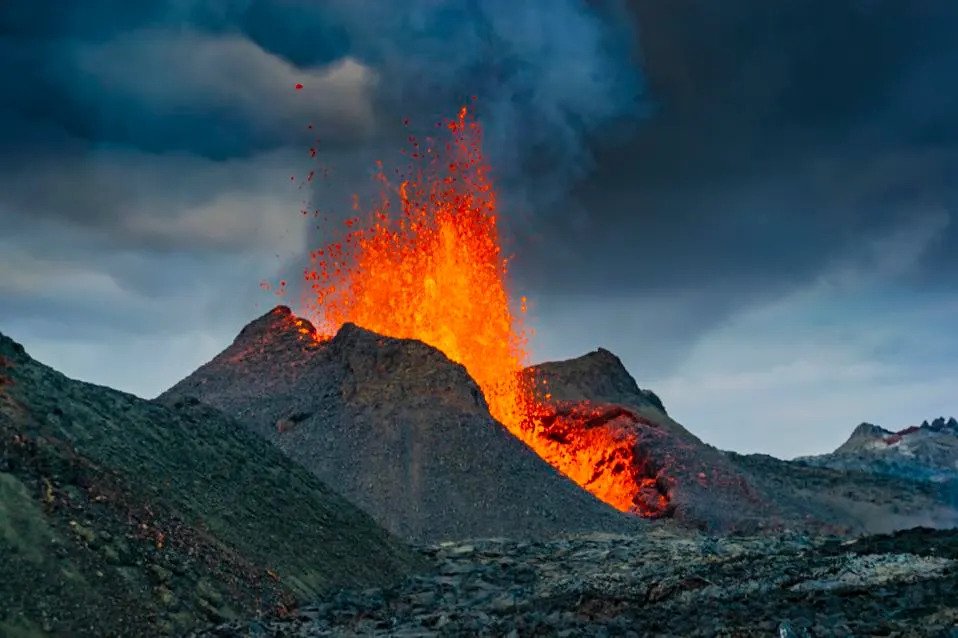- Sadiq Khan
- 19 Minutes ago
Global volcanic activity: Iceland, Sicily, and beyond
-
- Hum News
- Nov 26, 2023

WEB DESK: In recent weeks, seismic activity near Iceland’s Svartsengi geothermal power plant has signaled the rise of magma, creating concerns of a potential eruption along a 14km-long fracture.
The town of Grindavik is already affected, as wide fractures open due to molten rock nearing the surface, and the ground continues to swell, increasing the risk of an eruption with little warning.
Simultaneously, Sicily’s Mount Etna erupted, showering nearby towns with ash. This comes amid ongoing rumblings from 45 other volcanoes worldwide, including Mayon and Ta’al in the Philippines, Santa Maria in Guatemala, Nevado del Ruiz in Colombia, and Krakatau in Indonesia.
Krakatau, in particular, is rebuilding after a 2018 collapse triggered a tsunami claiming over 400 lives.
Read More: Iceland volcano alert: residents allowed five-minute home return
The potential eruptions at Svartsengi and other volcanoes vary in impact, from harmless solidification beneath the surface to the typical Icelandic style of fluid lava pouring from surface cracks.
Mount Etna’s recent activity is considered routine, with minor displays of lava and ash columns.
The current state of most active volcanoes involves minor explosions, lava outbursts, or the formation of small pyroclastic flows.
The primary threat is to those residing near these volcanoes, leading to established exclusion zones in case of escalating activity.
Volcanoes erupt when fresh magma from the Earth’s mantle reaches the surface, occurring regularly with approximately 70 volcanoes erupting each year.
Iceland, positioned on the North American Plate’s west and the Eurasian Plate’s east join, is entirely built from volcanic rock.
Meanwhile, many active volcanoes are situated above subduction zones, where one tectonic plate descends beneath another, leading to magma production.
Historically, volcanic activity has caused significant events, such as Iceland’s Fagradalsfjall eruption in 2021 after centuries of dormancy.
Mount Etna has a history of more destructive eruptions, including lava outbursts causing damage in populated areas.
While volcanic activity is a natural occurrence, concerns arise for specific locations, such as the evacuated town of Grindavik in Iceland.
Plans are in place to protect the town from potential lava flows using water jets. The historical precedent of the Laki eruption in 1783, which had far-reaching consequences due to a massive outpouring of lava and poisonous gas, adds an element of unpredictability to future events.
In summary, the global volcanic landscape presents a mix of routine activity and potential risks, stressing the need for preparedness and caution, especially in specific regions facing immediate threats.





